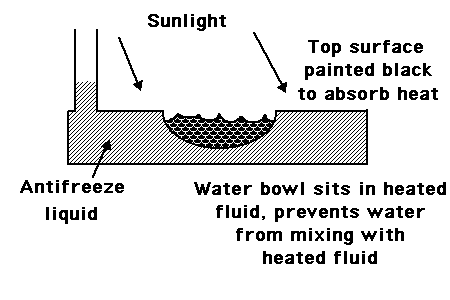Torbenc
Newbie level 5
We have a very cold winter here in europe right now..
I have some animals outside, with a small 0.3L water bowl. In under 20min the bowl is frozen so they can't drink from it.
I have searched and searched for a already built solution, that can keep the water thawed.
Any ideas for a cheap solution, that don't requires more power that I can make from a solar panel?
The water should not be heated to more than just over freezing point - So it's not very much power required?
I have some animals outside, with a small 0.3L water bowl. In under 20min the bowl is frozen so they can't drink from it.
I have searched and searched for a already built solution, that can keep the water thawed.
Any ideas for a cheap solution, that don't requires more power that I can make from a solar panel?
The water should not be heated to more than just over freezing point - So it's not very much power required?
